Is Coke Zero a Diet Drink
The Untold Truth Of Coke Zero
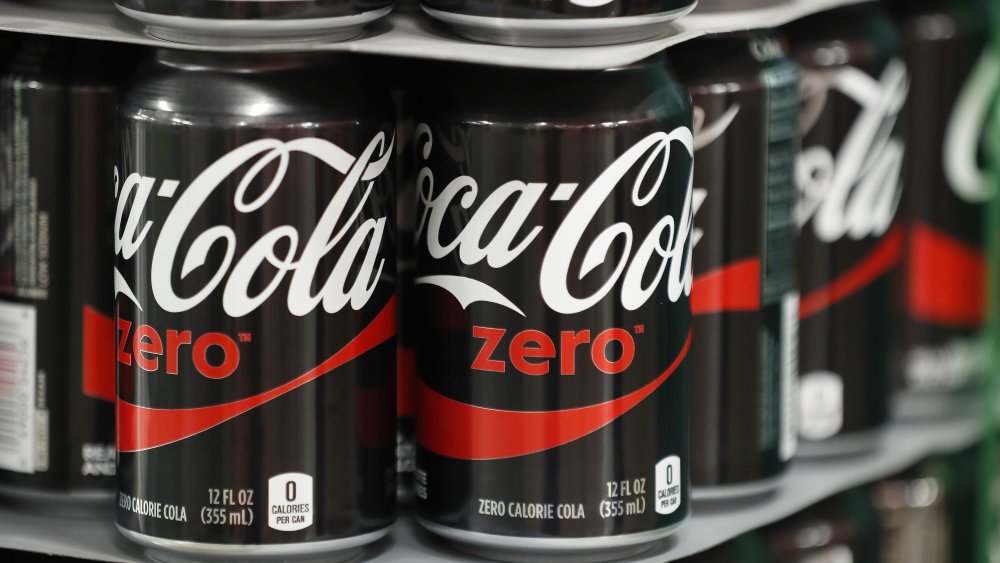
George Frey/Getty Images
After hitting the scene in 2005, Coke Zero has gone on to become one of Coca-Cola's most recognizable brands. Today, this slimline soft drink — which is now known under the "Coca-Cola Zero Sugar" brand — sits comfortably up on that cola parthenon with its not-too-divergent siblings: Diet Coke and Coca-Cola itself.
But there's a lot more to the Coke Zero story than you might expect. Things may be hunky-dory now, but over the years Coke Zero (or Coca-Cola Zero Sugar, or Coca-Cola No Sugar, or whatever you want to call it) has been subject to marketing controversies, health concerns, and tax woes that have threatened to dismantle the drink's seemingly unimpeachable reputation. And then there are the questions: Is it bad for you? How is it different from Diet Coke? And just how different does it really taste to original Coca-Cola? For all this — and more — here's the untold truth of Coke Zero.
A history of diet sodas
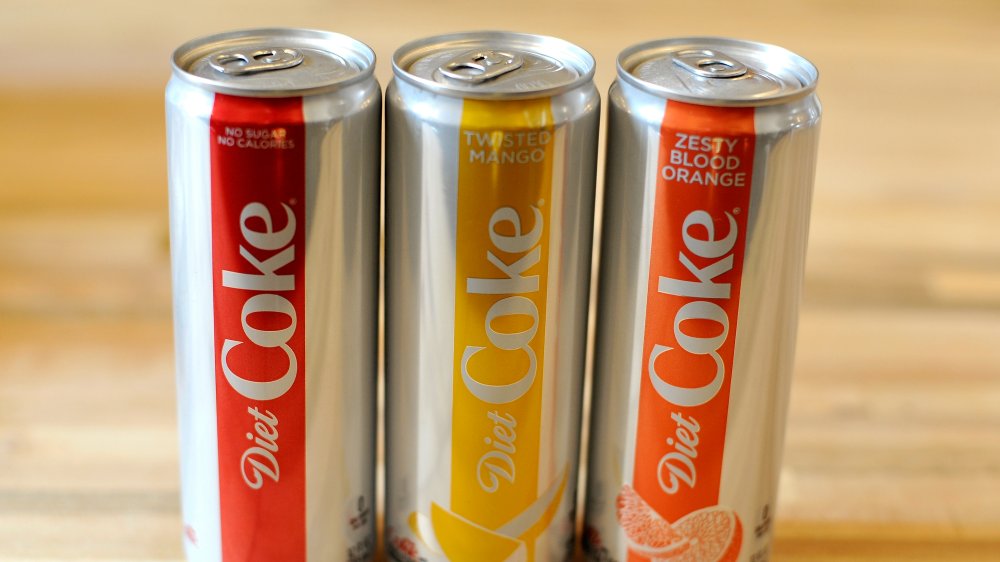
Kris Connor/Getty Images
Coke Zero's origins can be traced back to its soft drink progenitors; the early diet sodas. The very first of these was No-Cal Ginger Ale, a sugar-free soft drink created by Russian immigrant and businessman Hyman Kirsch, who wanted to sell a drink that could be enjoyed by the diabetic patients at the Jewish Sanitarium for Chronic Disease, where Kirsch was vice president.
Soon enough, other soda companies began producing their own competitors to Kirsch's product. In 1954, Canada Dry introduced Glamor, a zero-calorie ginger ale. The Royal Cola Company released Diet Rite Cola in 1958, originally sold at drug stores to diabetics, but in 1961 the product was expanded and sold in supermarkets across Chicago.
In 1963, Coca-Cola launched TAB (the company was warned not to call it Diet Coca-Cola for fear of damaging their trademark), while Pepsi released Patio Diet Cola (named so for the same reasons as TAB). In 1964, the latter company dropped the confusing brand clash, and Patio Diet Cola became Diet Pepsi. The next few years saw the release of a bunch of diet sodas, including Sugar Free Dr. Pepper, Fresca, and Sugar Free 7-Up. These drinks were no longer made for people with health problems — they had become a national sensation.
Diet Coke was released in 1982, swiftly replacing TAB as Coca-Cola's flagship diet soda — and in 2005, the company released its next iconic low-cal soft drink: Coke Zero.
Coke Zero v. Diet Coke
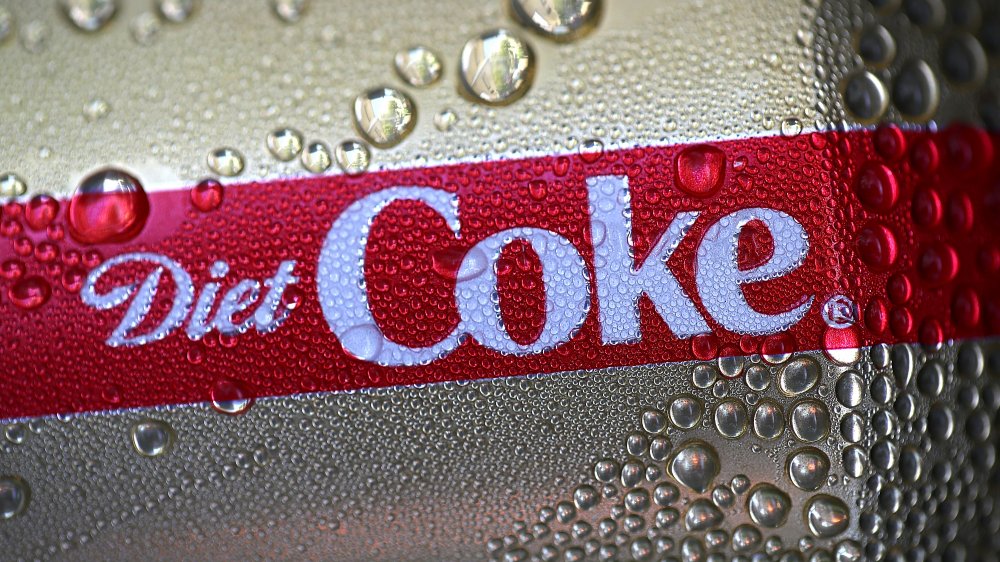
Justin Sullivan/Getty Images
You might think that Diet Coke and Coke Zero are like two peas in a pod — aside from them looking a little different — but the truth is that there are a handful of differences between these two drinks, beyond just their appearances.
The most noticeable difference of all is the taste. While Coke Zero is made to taste exactly like regular Coca-Cola, Diet Coke has its own distinct flavor — in Coca-Cola's words, "a lighter taste." In this sense, you're probably best thinking of Diet Coke as a separate product entirely, while Coke Zero is nothing more than a slimmed-down version of the original. There's also a very slight difference in the ingredients — Coke Zero contains sodium citrate, whereas Diet Coke contains citric acifd. The latter is, according to Coca-Cola, the "most widely used organic acid in the food industry," and is used in beverages to provide tartness. Sodium citrate does the exact same thing, and neither appears to be much better or worse than the other.
Most notable of all, however, is the effect that Coke Zero is having on Diet Coke's sales. As the new kid on the block has become more popular, Diet Coke's sales have suffered — with executives at Coca-Cola saying that Coke Zero is "cannibalizing" sales of Diet Coke (and even original Coca-Cola) in certain markets. This is because Diet Coke isn't appealing to the company's more health-conscious customers, who are increasingly flocking to Coke Zero as the better low-calorie alternative.
The secret recipe of Coke Zero
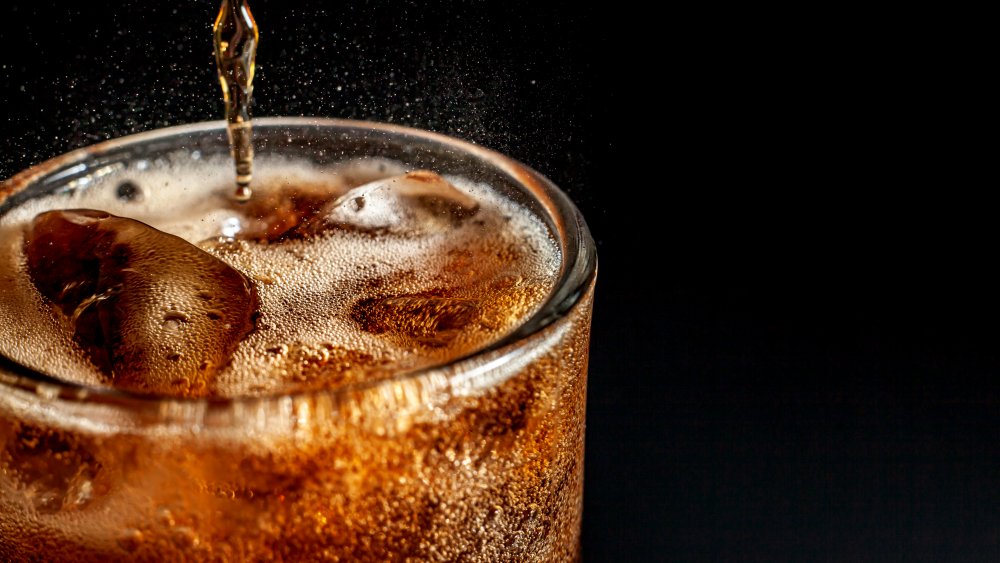
Shutterstock
Considering such a big deal is made out of the ingredients (or lack thereof) in Coke Zero, it's probably worth taking a deeper dive into just what this particular soft drink contains.
According to Coca-Cola, Coke Zero contains exactly nine ingredients: carbonated water, caramel color, phosphoric acid, aspartame, potassium benzoate, natural flavors, potassium citrate (or sodium citrate), acesulfame potassium, and caffeine.
Many of these speak for themselves — we don't need to tell you what carbonated water is, for example. The exact make-up of the natural flavors aren't known for certain, since the company likes to keep the recipe on the down-low, but past suggestions of ingredients include lime juice, vanilla, caramel, orange oil, lemon oil, nutmeg oil, coriander, neroli, and cinnamon. For what it's worth, Coke Zero contains 34 milligrams per 12 fluid ounces of caffeine — the exact same amount as a can of regular Coca-Cola.
In terms of nutritional information... well, there basically isn't any. Coke Zero contains no fat, no carbohydrates, no sugars, no protein, practically no minerals (aside from a very low amount of potassium), no calories and only 40 milligrams of sodium; around 2 percent of your daily guideline amount. Don't get too excited, though — a clean sheet like this doesn't necessarily mean Coke Zero is good for you.
Health concerns regarding Coke Zero
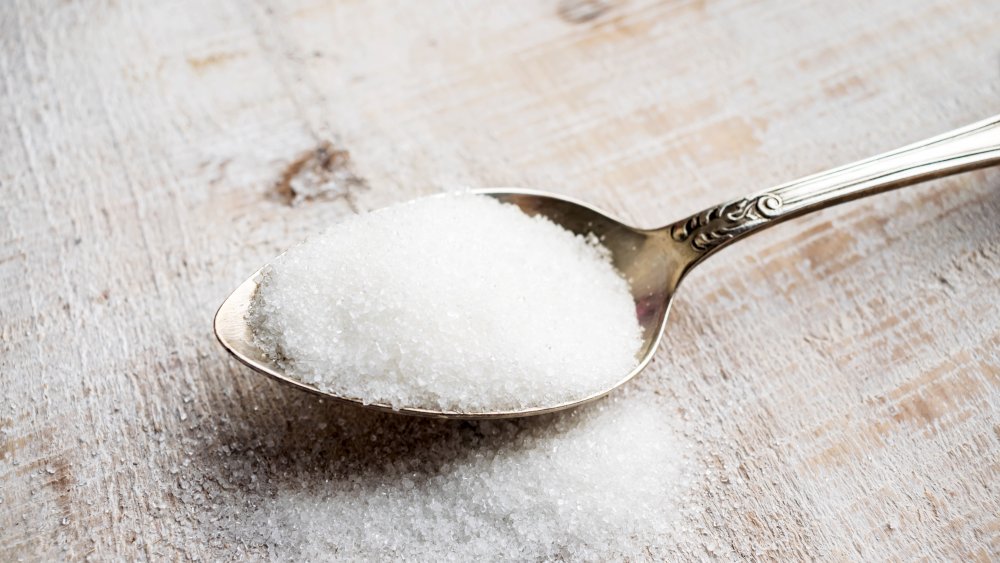
Shutterstock
The first thing to know about some of the health concerns behind Coke Zero is that artificial sweeteners are used to make the drink sweeter without having to add calories. While not overtly dangerous, there are concerns about the impact on artificial sweeteners on your health, and, according to Healthline, these concerns "are growing."
Coke Zero's artificial sweeteners are aspartame and acesulfame potassium. Studies have shown that there may be an association between sweeteners like these and an increased risk in type 2 diabetes; at the very least, they don't put you at any less risk of contracting diabetes compared to sugar-sweetened drinks. There's also research that suggests a link between artificial sweeteners and obesity, with some studies concluding that these chemicals "may influence body weight in other ways than calorie intake." But it's important to note that there is conflict here too, and some reports have suggested that "the use of artificial sweeteners is either neutral or beneficial for weight management."
Beyond that, studies have suggested that they could have an impact on your gut microbiome, causing poor blood sugar control, could increase your risk of heart and kidney disease, and that they have a connection with osteoporosis, a disease that affects bone density.
While this is all fairly murky stuff, and more research is needed, it's important to recognize that Coke Zero's lack of scarier looking ingredients such as sodium, fat or carbs does not mean it's good for you.
All the colas of the Coke Zero rainbow
Of course, the Coke Zero diehards (we know you're out there) will be able to tell you that Coke Zero isn't the only "Zero Sugar" drink offered by Coca-Cola. In fact, there are several variations on the classic recipe.
Caffeine Free Coke Zero is basically what it says on the can — same ingredients, same taste, less chance of it getting you all jittery. There are a handful of specific flavors too, including Cherry Vanilla, Vanilla, and Orange Vanilla. Slightly more obscure is the Coca-Cola Energy Zero Sugar, which is kind of like a Coke Zero energy drink — it contains 111 milligrams of caffeine per can, more than three times the amount as a normal can of Coke Zero, as well as a number of vitamins, including B3 and B6. Then, if you want to get really specific, you've got the cherry-flavored version of this, Coca-Cola Energy Cherry Zero Sugar. This contains a little more caffeine as well as that cherry flavor.
Even more variants can be found in overseas markets. For example, certain countries, including Australia, have seen the release of Coca-Cola Peach No Sugar, which the company called "a great addition to pool parties, BBQs, and beach days." The company released a special festival version of Coke Zero, made with cinnamon, in 2018. That same year, Coca-Cola Stevia No Sugar was released in New Zealand — with Coca-Cola pointing out that stevia is "200 times sweeter than table sugar".
Coke Zero was marketed as a men's soda

Shutterstock
When Coke Zero first debuted in 2005, the product's marketing was angled towards one very specific group of people: men. And this hasn't really changed over the years, either. In 2013, Coca-Cola ran a series of ads suggesting Coke Zero was the birthright of "guys being guys." When the company began introducing that neat little gimmick where you could get names printed on cans, the advertising for the generic words used on Diet Coke and Coke Zero cans couldn't have been more different: Diet Coke featured epithets such as "BFF," "Star," and "Go-Getter," whereas Coke Zero cans were emblazoned with the words "Grillmaster," "Wingman," "Gamer," and "Bros."
There's a reason for this too: Apparently, men won't drink Diet Coke. In the past, Coke has tried to convince men to buy and drink Diet Coke, with lackluster results. Arguably, this comes down to the perception that diet products are inherently feminine — and apparently Diet Coke's white can doesn't exactly help, either.
But Coke Zero, with its black can and male-oriented marketing strategy, has been far more successful. According to Harvard Business School lecturer Jill J. Avery, what Coke quickly realized "was that even though there was a functional need for men to drink lower-calorie soda, men couldn't bridge the gender gap image-wise without a new brand and product just for them. It was a way to tell men, it's OK, here's your brand. Drinking this brand won't affiliate you with women."
Coke Zero's "zero movement" was a misfire

Shutterstock
While Coke Zero has been a major success story for Coca-Cola, the soda's launch in Australia back in 2006 was something of a disaster. The company attempted to tease the release of Coke Zero with a viral marketing campaign. They created something called the "zero movement," which appeared across Australia on posters, coasters, chalk graffiti, and a now-defunct website.
On this website, you could read the zero movement's manifesto, which doesn't so much bring to mind an edgy street vibe as it does an international terror cell. You could also download the movement's branding material, and read blog posts that asked: "Why can't every weekend be long?" and "Why can't I still get toys for Christmas?" Basically, Coca-Cola were trying to appeal to tech-savvy internet-loving twenty-somethings.
But the tech-savvy internet-loving twenty-somethings were not impressed. Blogs across Australia voiced their distaste for the campaign, with one parody site suggesting visitors spend money on charity rather than sodas, and another selling T-shirts reading: "I joined the zero movement and all I got was this lousy brain tumour."
According to marketing lecturer Gary Buttriss, companies as large as Coca-Cola are always taking a risk by attempting viral marketing campaigns. "I think businesses are attracted to it because they think of it as a new and inexpensive channel to the market," he said at the time. "But it is still in its infancy and the big brands are most at risk from the possible negative consequences."
Coke Zero has had other marketing mishaps
Australia wasn't the last of Coke Zero's marketing woes, however. When the product was released in the UK, Coca-Cola attracted flak for its Coke Zero launch campaign. It featured a number of ads with various straplines, playing on the idea that Coke Zero contains the best part of Coca-Cola without the worst prat. Many of these straplines were criticized for being offensive to various groups. "Girlfriends without a five-year plan," for example, sparked complaints for implying that all women want to do is settle down. (And there's that male-oriented marketing, again.) "Gigs without tall people" was criticized for marginalizing tall people and encouraging verbal and physical abuse. Most of all, however, "Blind dates without the psychos" attracted criticism from mental health charities, such as the Scottish anti-stigma campaign See Me.
In a statement on behalf of Coca-Cola, a spokesperson said: "Mental health is a sensitive issue and we appreciate that this ad may offend some people."
Some fans weren't happy about Coke Zero's rebranding
You might have noticed that, when discussing Coca-Cola's leading no-calorie drink, people refer at once to Coke Zero and Coca-Cola Zero Sugar. This is because the product underwent a rebrand in 2017 — and not everyone was happy about it.
Just before the launch (or re-launch) of Coke Zero Sugar, Coca-Cola CEO James Quincey said that "It is a reinvention of Coke Zero," and the company insisted Coke Zero Sugar is even closer to the taste of classic Coca-Cola than Coke Zero. The marketing also made more of a point out of Coca-Cola Zero Sugar containing — well, zero sugar. It's right there in the name, this time.
Online, however, people were less than thrilled at the rebrand. "NOOOOO PLEASE DON'T RUIN MY COKE ZERO" said one Twitter user. Another feared: "I already lived through New Coke. This better not be New Coke Zero." In one particularly nihilistic outburst, yet another Twitter exclaimed: "There is no God."
Mixed reviews, basically. But James Quincey wasn't worried. He pointed out that, while any change has some degree of risk to it, the rebrand of Coke Zero had been met with positive reactions in certain markets — and confusion had been kept to a minimum. "Consumers get it immediately," Quincey said.
Coke Zero in the U.K. looks a little different
In the U.K., however, the New Coke redesign went one step further. There, Coca-Cola decided to redesign the packaging for the new Coca-Cola Zero Sugar to look more or less exactly like the packaging for classic Coca-Cola.
The red and white color scheme remained, with just a small, black strip across the top of the bottle or can to let customers know it was the zero sugar version. This came as part of a concerted attempt on behalf of Coca-Cola to sell more no-sugar drinks in the UK (at the time, in 2018, 58 percent of Coca-Cola sodas sold in the country were no-sugar versions.)
In a statement, the company said: "The changes unify both variants with the iconic Coca-Cola red and form part of the company's commercial strategy to encourage more people to try Coca-Cola Zero Sugar."
But there's a slightly more predictable reason that may have been behind this particular rebrand. In April 2018, the U.K. government had introduced a sugar tax and drinks containing more than eight grams of sugar per 100 milliliters of liquid taxed at the equivalent of 31 cents per liter. Unlike other companies, Coca-Cola did not change their recipe to adapt — and this push for consumers to buy no-sugar alternatives seems to have been their way to skirt the sugar tax and make a little more money. No surprise there, huh?
Source: https://www.mashed.com/217041/the-untold-truth-of-coke-zero/